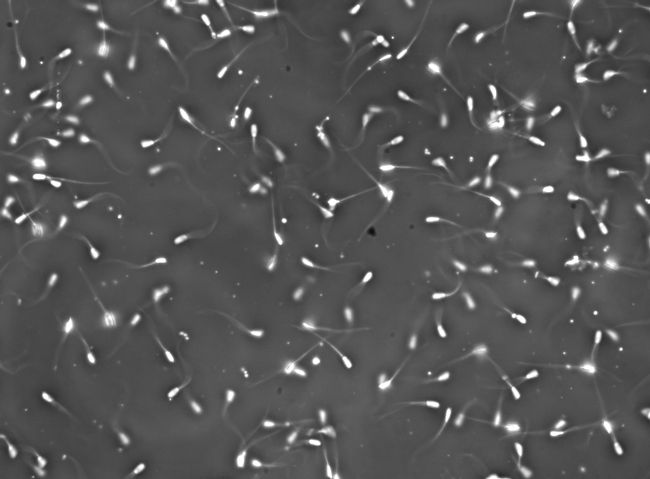Why do sperm numbers per dose sometimes vary?
The sperm number per semen dose is a very important quality criteria, when selling semen tubes to customers, as well as when using them on your own sow farm. A semen dose needs to contain a certain minimum number of sperm to allow the successful fertilization of a sow after insemination. Variations in the sperm numbers per dose therefore require the analysis of possible reasons.
The sperm number per semen tube is the product of a long production chain with many steps. Only if all those steps are performed correctly, the target sperm number per semen dose can be precisely achieved. If there are significant deviations from the target cells number e.g., more than ± 15%, the sperm production chain should be checked for possible flaws.
The very first step in the error analysis is to differentiate between systematic and non-systematic deviations from the target value. A systematic deviation from the target cell number per sperm tube is characterized by a deviation, that always shows the same direction e.g., always a higher sperm number per tube than the target cell number. On the other hand, a non-systematic deviation from the target cell number per sperm tube is characterized by an unspecific deviation e.g., one time there are too many sperm cells per tube and the next time there are too few sperm per tube.
These flaws typically result in a fixed (=systematic) deviation from the target cell number per semen tube and are therefore easier to find. Whereas reasons for unsystematic deviations are harder to find.
Many of these reasons lead to wrong semen concentration determination during raw ejaculate analysis. This in turn results in a wrong calculation of the possible sperm doses that can be produced from a given boar ejaculate. And this will result in a deviation from the target cell number in the final sperm dose.
Unfortunately, combinations of the described possible errors are possible, which makes it even more difficult to identify the reasons for variations in sperm number per dose.
If you are experiencing these variations in sperm number per dose, feel free to contact Minitube’s experienced experts for sperm production. They are happy to assist you with the analysis of your semen production protocol.
The sperm number per semen tube is the product of a long production chain with many steps. Only if all those steps are performed correctly, the target sperm number per semen dose can be precisely achieved. If there are significant deviations from the target cells number e.g., more than ± 15%, the sperm production chain should be checked for possible flaws.
The very first step in the error analysis is to differentiate between systematic and non-systematic deviations from the target value. A systematic deviation from the target cell number per sperm tube is characterized by a deviation, that always shows the same direction e.g., always a higher sperm number per tube than the target cell number. On the other hand, a non-systematic deviation from the target cell number per sperm tube is characterized by an unspecific deviation e.g., one time there are too many sperm cells per tube and the next time there are too few sperm per tube.
Typical reasons for systematic deviations from the desired sperm number per tube, include the following:
- Uncalibrated or misadjusted pipettes or dispensers
- Erroneous dilution factor settings in the CASA system or photometer, that do not match the actual pre-dilution during sample preparation
- Misused pipettes e.g., pipette piston is fully pressed before taking up sample and then again fully pressed when dispensing the sample, which results in a too high pipetting volume
These flaws typically result in a fixed (=systematic) deviation from the target cell number per semen tube and are therefore easier to find. Whereas reasons for unsystematic deviations are harder to find.
Typical reasons for unsystematic deviations from the target cell number include:
- Lack of sufficient homogenization of samples for concentration measurement leading to unrepresentative samples
- Lack of sufficient homogenization of diluted semen before or during filling of the semen doses (keep in mind that semen is a suspension and that sperm cells tend to concentrate at the bottom of containers = sedimentation)
- Semen agglutination leads to erroneous cell detection in CASA systems; this becomes important during analysis of QC samples as well, if the QC analysis is performed, to check the sperm number per semen dose
- Variation of chamber height of low-quality counting chambers for CASA systems can obfuscate sperm concentration determination
- Unfocused sperm cells lead to lack of cell detection in CASA systems, which results in a lower concentration measurement value
- Inappropriate pre-dilution rates during sample preparation for CASA or photometer analysis lead to incorrect concentration measurement results
- Pipette tips that are not suitable for the pipette; these tips may loose liquid during pipetting, which leads to false measurement results
Many of these reasons lead to wrong semen concentration determination during raw ejaculate analysis. This in turn results in a wrong calculation of the possible sperm doses that can be produced from a given boar ejaculate. And this will result in a deviation from the target cell number in the final sperm dose.
Unfortunately, combinations of the described possible errors are possible, which makes it even more difficult to identify the reasons for variations in sperm number per dose.
If you are experiencing these variations in sperm number per dose, feel free to contact Minitube’s experienced experts for sperm production. They are happy to assist you with the analysis of your semen production protocol.















